How to Catch Big Fish in Shallow Water with Softbaits
Softbaiting is a form of fishing that most anglers are familiar with these days and when done well, it can not only be a very fun form of fishing,but extremely effective too! Softbaiting in ultra-shallow water really tests the angler’s skills and provides an extra edge to your fishing, particularly over shallow reefs where one run can spell disaster if you’re not ready to lock and load. All it takes it some basic gear, an idea of where to head, and a couple of tips. Anyone can have good success with some sporty fishing and the end result of some fish for the bin. Read on to get your own head start on the action...
Shallow Water Softbaiting Locations
Harbours & Estuaries
There are many easily accessible, ultra shallow places that can be softbaited with great success, the first of which are in NZ’s various harbours. These are super accessible to most anglers and can be fished in most conditions making them a nice reliable option. However, this area is dependent on the time of year, snapper especially prefer the warmer water so November - May will be more suited. When the anchovies start to run in late summer around Auckland’s inner gulf the action can be all on! Look for the terns working and splashy surface action from the kahawai rounding up massive schools of anchovies and you’ll be into some epic action on light softbait gear. Smaller white or silver soft plastics that match the size and colour of the baitfish being harassed will often give you the best results. Running a canal style freshwater combo is ideal for this type of fishing, the rod length and softer action allows you to cast very small, light softbaits a long way and using lighter line helps present your softbaits naturally. Another thing to consider is the tide as this will often influence where you can fish. For example, on a higher tide, fishing the flats up in the back of the harbour or around the mangroves (if present) will often produce some quality fish. Otherwise, on lower tides, fishing smaller channels that feed into a main channel can be a great option also. You’ll be surprised with the quantity and size of fish that take up residence in the skinny water of the harbour.
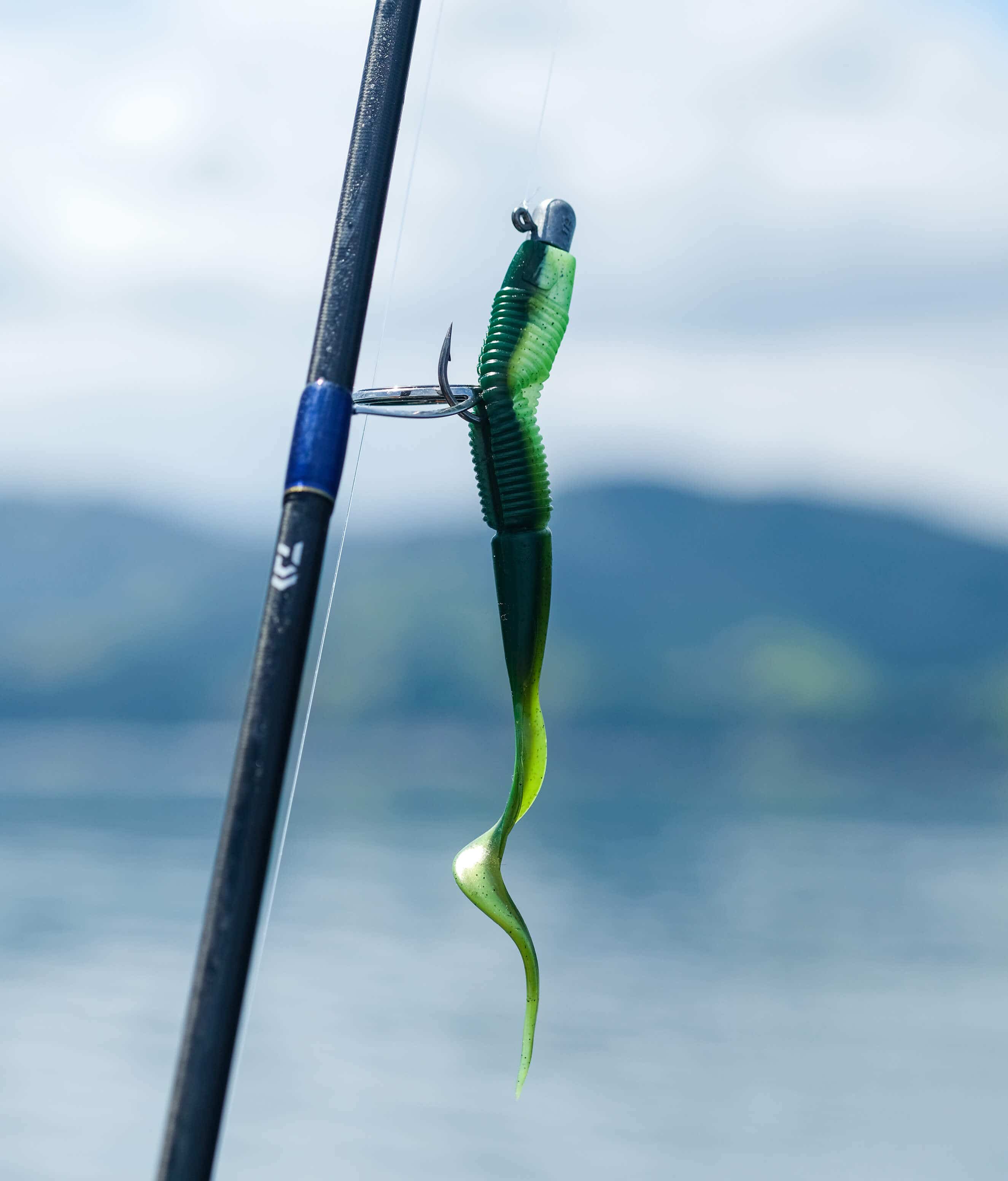

Landbased & Surf
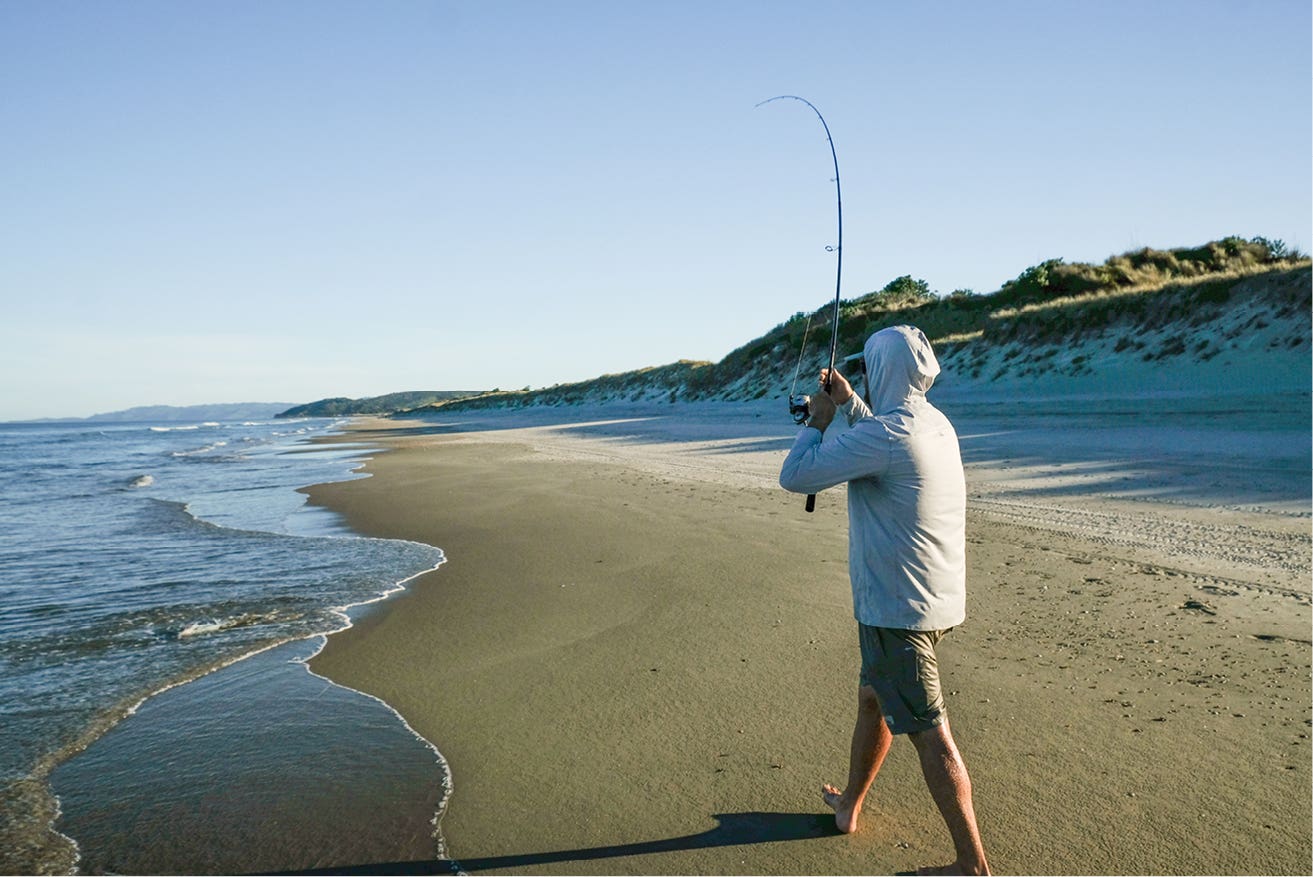

For those opting to head a bit further afield or who don’t have harbours quite as accessible, this form of ultra shallow softbaiting can be done along any surf beach or rocky platform around NZ. During spring and summer you’ll find that the snapper are right in close behind the breakers - often in reach of the land based fishermen making for a great opportunity to get your softbaiting gear out! Pushing right in behind the surf or sitting just off it can both be great options to get into some solid fish. However, this is heavily dependent on the sea conditions. Safety is always the number one rule and caution is required, particularly if there’s a swell running. Fishing is often better either just before sunrise or just after sunset.
For those that want to have a crack off the bricks, when the tide’s right there's nothing better than flicking a few lightly weighted softbaits into gutters, wash, and reefy zones. It’s simple, effective, and full of opportunity. All you need is a medium-action rod with a bit of length (7'6'' - 8'0'') and a slightly heavier leader around 30lb - just in case a bigger model of your target species shows up. There’s something seriously satisfying about heading out with just a rod, reel, and a few softbaits in your pocket … and coming home with a feed in under an hour!
Shallow Reefs & Wash
The last location we will talk about is softbaiting over ultra shallow reefs. This is under 10m and as shallow as 2-3m. This can be done around any island group or reef structure and fish will inhabit these zones year-round. During winter months there are generally less fish however the ones that are there are usually of exceptional quality! If you’re targeting a trophy make sure your gear is set to match that. A set like the highly affordable Daiwa Revros LT4000-C / Exceler Oceano 7'6'' combo is great for this style of fishing as it combines sensitivity to detect even the slightest of touches but also has the grunt to really put the hurt on some of those big fish.
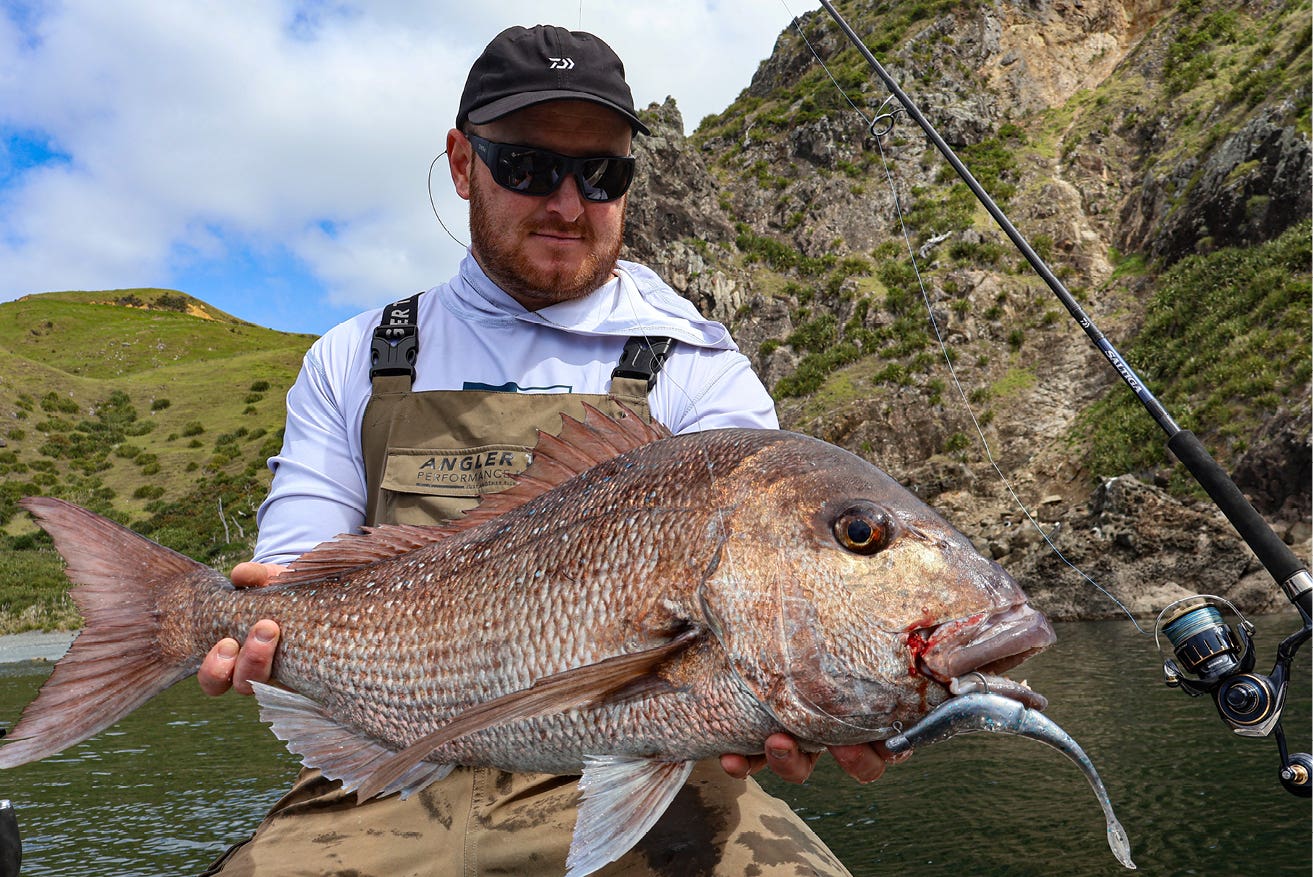

Gear for Shallow Water Softbaiting
The terminal tackle we’re using differs depending on the location you are fishing. Generally, around harbours or beaches, snags aren’t as much of a worry so you are able to drop the weight of your setups right down to entice the bite, maximise the fun and enjoy each capture. Particularly on bright sunny days fishing a light leader (10lb Fluorocarbon) makes a big difference in the number of bites you can get as the fish can be a little lure shy. On the other hand, when over a reef you should be using a heavier set up and leader as you will need to apply a very heavy drag to stop the fish from busting you off. If you hook that horse, the first 20 seconds are crucial! Not giving the fish any free line is crucial, you need a sharp crew to quickly reel in any lines, retrieve the sea anchor (if using), fire up the motor, and chasing that fish down to stay on top ot it. This helps to minimise the amount of line out and reduces the line angle which makes it harder for the fish to wrap around a piece of structure on the sea floor. Ideally, you would fish 20lb braid and 30lb fluorocarbon leader as this provides a bit of extra protection should the fish get to the bottom. However, if they are a bit shy on the bite then 20lb fluorocarbon may be required - and if connected well to your mainline (we recommend an FG knot) a lot of pressure can still be applied!
When you are fishing the shallows it is best to use a light jighead, the Daiwa Bait Junkie heads work incredibly well. Heavier jig heads are not recommended in any of the skinny water applications as it doesn't allow the softbait to sink or twitch naturally, making it difficult to get that bite. A Bait Junkie jig head around 1/4 to 3/8 of an ounce with a 1/0 to 5/0 hook (depending on the size of the softbait) is ideal. The weight of the jig head ultimately depends on the speed of your drift. Slower drifts lead to lighter jig heads and vice versa. When harbour fishing, particularly in channels, there is often more current so you may need to upsize your jig head to ensure you are getting your softbait down into the strike zone.
When it comes to softbait styles and sizes, always match the hatch. For harbour and beach application, the fish you are targeting are eating smaller prey and are often not trophy sized, due to this we recommend using smaller more natural lures like the Daiwa Bait Junkie Risky Critters, Grubs, smaller Prawns and Minnows. Some models and colours to start with would be the 4” Grub in Motor Oil, 2.5” Minnow in Ayu, and 3” Wave Minnow.
When fishing reef structure you'll need to use a bigger profile to attract larger fish. The larger 5” & 7” Jerk Shads and 5.5” Wave Minnows are prime candidates for this type of fishing. This bigger profile is more suited to the fish found on these shallow reef systems and colours like Baby Bass, Island Ihe and Wakasagi are regular favourites.
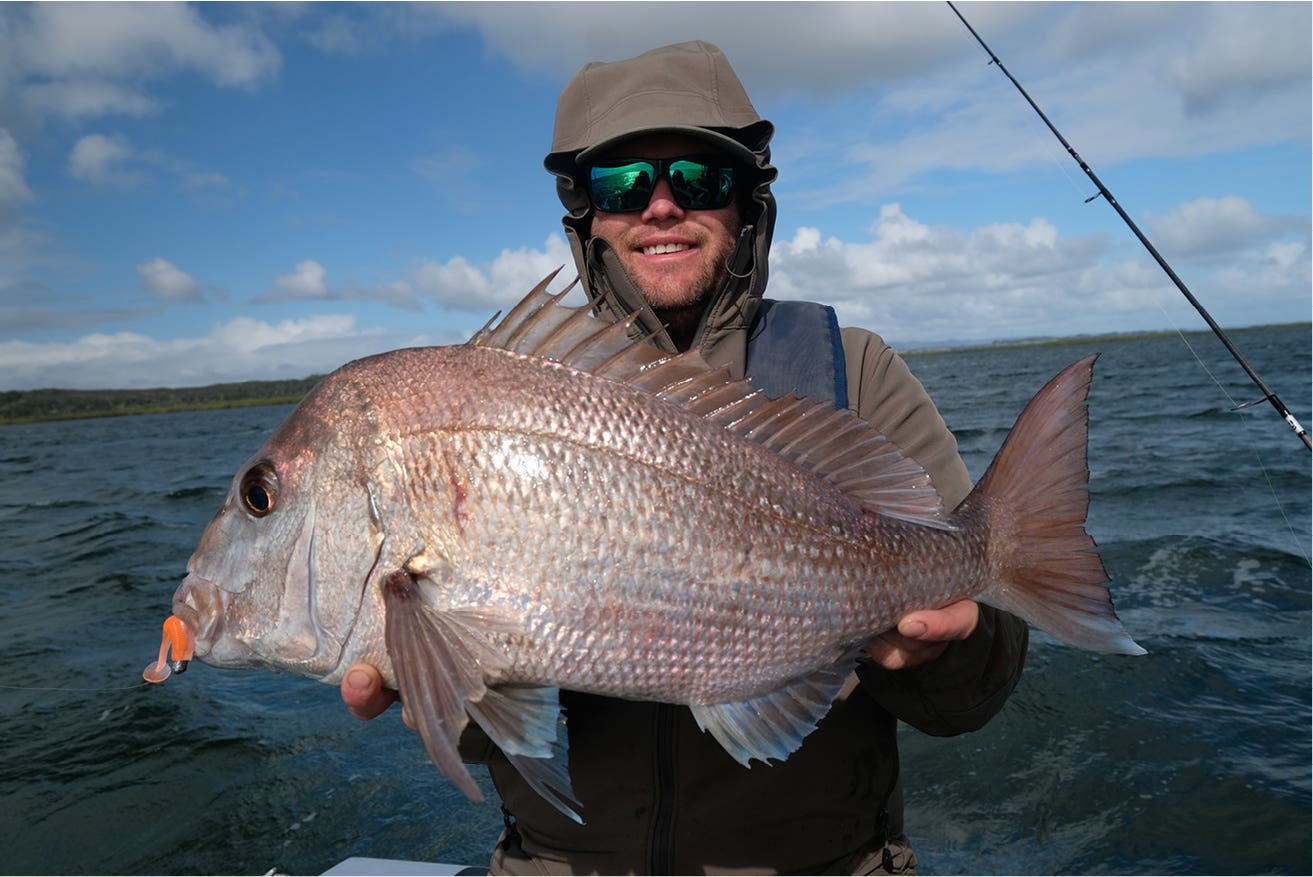



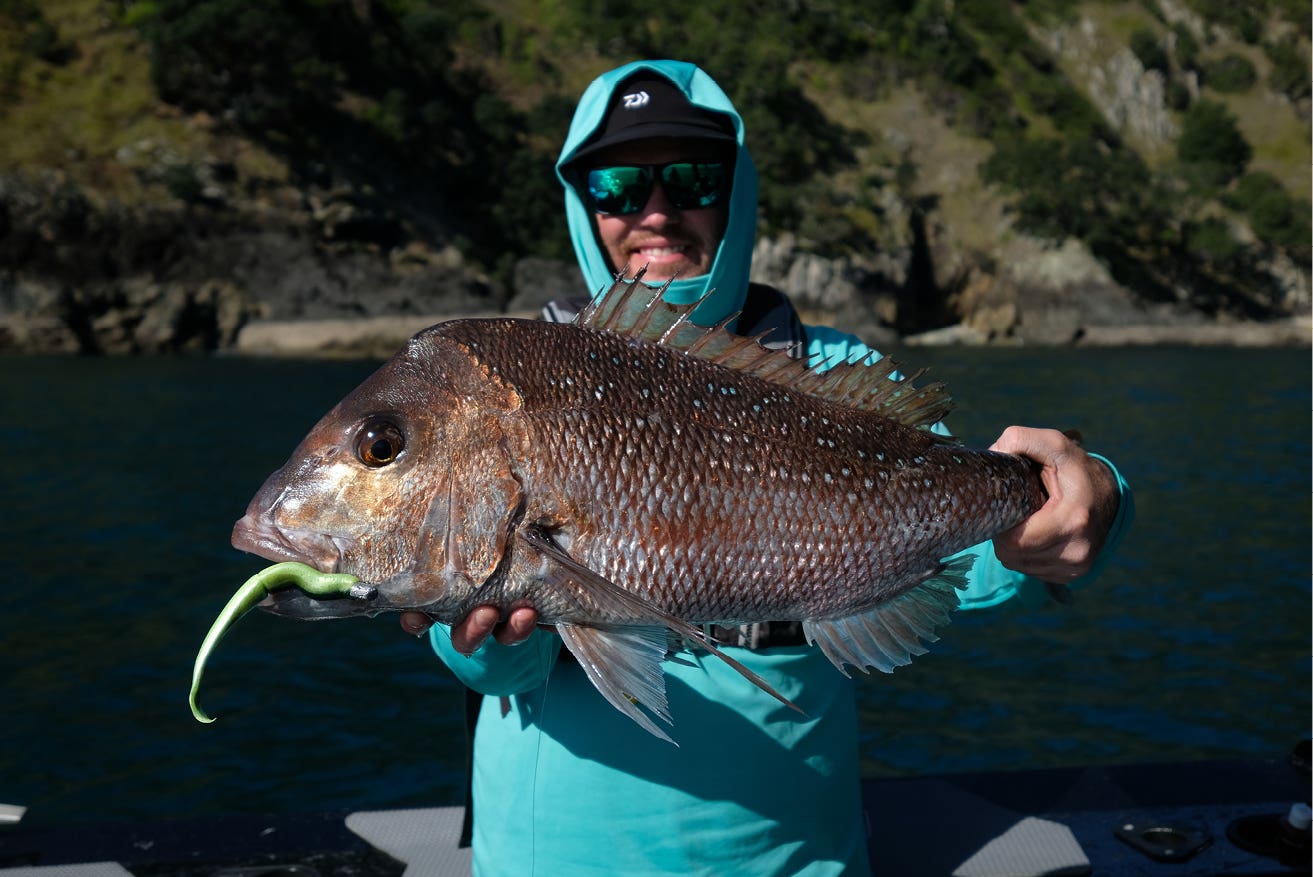

Five Quick Tips for Shallow Water Softbaiting
1- Stay in contact: eliminate slack line from the moment your softbait hits the water right through to the side of the boat or rocks. A fish can hit at any moment and if you’re not in contact with your lure then you’re not likely to get a solid hook-up.
2- Fish as light as sensible: you want your softbait to stay in the bite zone for as long as possible. Fishing light jig heads and light line helps slow the descent and stay out of snags while imparting a very natural swim or action.
3- Lock and load: don’t be afraid to put some hurt on the fish straight away. As long as your knots are good and you use the action and angle of the rod properly, you’ll be able to apply strong pressure without busting off due to gear failure. You can't give the fish an inch in this terrain, so go hard!
4- Read the water: before you cast just take a moment to observe currents, wash, or how the boat is drifting relative to the structure. This will all impact how your line and softbait interact subsurface and can be the difference between short, fruitless drifts and long action filled drifts.
5- Cast at trouble: it sounds counter-intuitive to send your softbait out in snaggy zones but that’s quite often where the fish are laying in wait for an easy meal, especially during winter months when energy conservation is paramount and they’re in ambush mode. This is where point #1 is essential for helping not lose gear or miss strikes. Cast and as soon as the softbait hits the water you should already be on the retrieve. A quick stop-start-stop-start retrieve will keep you in the zone but out of trouble of kelp, then it’s all about point #3 when a fish hits hard!
We encourage everyone to test their skills and give ultra shallow water softbaiting a crack. Whether it be harbour, beach or reef based it really is exceptional fun and a great way of targeting all types of predatory fish with simple gear. Best of all, most of it is easily accessible for everyone.
Do you have any questions?
Please, contact our friendly team on 0800 102041 or email: website@burnsco.co.nz
We provide general information on products, not personal advice. Always seek the help of a relevant tradesperson if you have a technical query.

